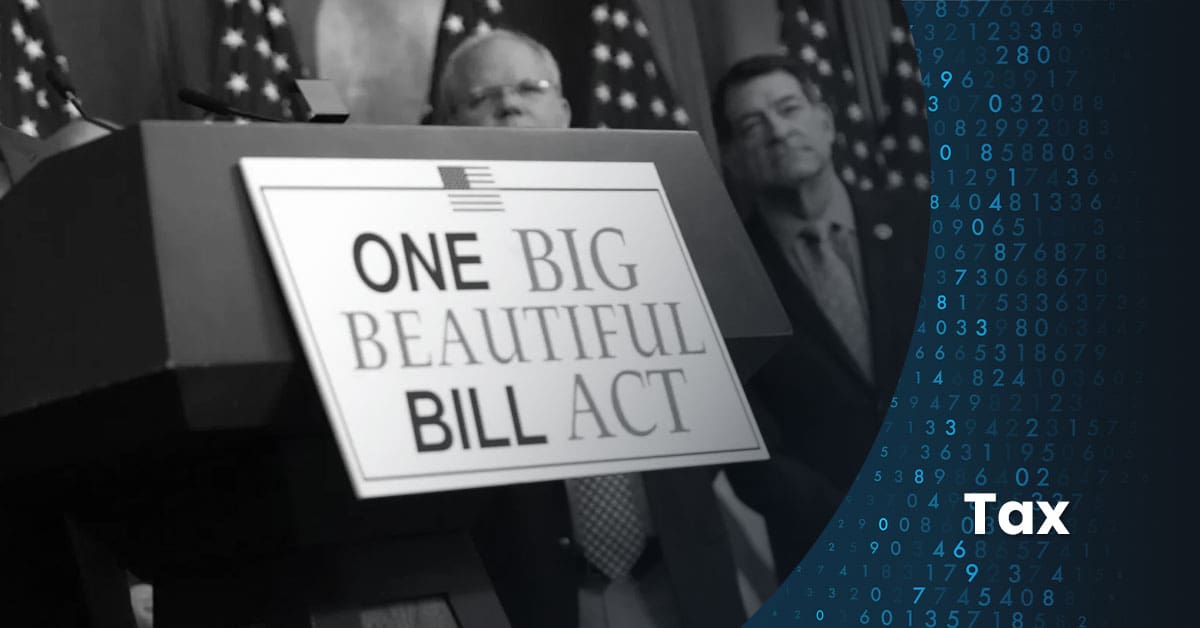The landscape of research and development (R&D) tax benefits has undergone a dramatic transformation. After years of complex capitalization requirements that strained business cash flow, the newly enacted tax legislation brings welcome R&D tax relief to companies investing in innovation.
The One Big Beautiful Bill Act (P.L. 119-21) (“OBBBA”), signed into law on July 4th, permanently restores immediate deductions for domestic research and experimental expenditures. This change reverses one of the most criticized aspects of the Tax Cuts and Jobs Act, providing businesses with the cash flow benefits they need to fuel innovation and growth.
The Problem: When R&D Deductions Disappeared
Before tax years beginning on or after January 1, 2022, businesses could deduct research and experimental (R&E) expenses in the year they were incurred. This straightforward approach encouraged innovation by providing immediate tax benefits to companies that invested in new products, technologies, and processes.
The Tax Cuts and Jobs Act changed everything. Starting with tax years beginning on or after January 1, 2022, businesses were required to capitalize domestic R&E expenses and amortize them over five years. Foreign R&E expenses faced a 15-year amortization period. This shift created significant cash flow challenges, particularly for small and medium-sized businesses that rely heavily on R&D investment.
The capitalization requirement affected a wide range of activities, from software development to product testing. Companies found themselves paying taxes on income they had already reinvested in research, creating a financial burden that discouraged R&D tax relief.
The Solution: New IRC Section 174A
OBBBA introduces IRC Section 174A, which permanently allows businesses to deduct domestic R&E expenditures in the year incurred. This provision applies to amounts paid or incurred in taxable years beginning after December 31, 2024.
Key Features of the New Law
Immediate Deduction Option
Businesses can now deduct domestic R&E expenses in the year they’re incurred, restoring the pre-2022 treatment that encouraged investment in innovation.
Flexible Capitalization Alternative
Companies can elect to capitalize and amortize domestic R&E expenditures over at least 60 months, beginning when they first realize benefits from the spending.
Extended Amortization Election
Under IRC Section 59(e), taxpayers can elect to capitalize and recover domestic R&E expenditures over 10 years, providing additional flexibility for tax planning.
Software Development Clarification
The act explicitly states that amounts paid for software development can be treated as R&E expenditures, removing uncertainty in this critical area.
Foreign Research Remains Unchanged
While domestic R&D receives favorable treatment, foreign research expenses continue to face the 15-year amortization requirement established by the Tax Cuts and Jobs Act. This distinction encourages companies to conduct research activities within the United States.
The foreign research rules apply to expenditures attributable to research conducted outside the United States, as defined in IRC Section 41(d)(4)(F). Companies with international operations must carefully track where their research activities occur to properly apply these rules.
Special R&D Tax Relief for Small Businesses
The new law includes particularly generous provisions for small businesses, recognizing that the capitalization requirements disproportionately harmed these companies.
Retroactive Application
Small business taxpayers meeting the gross receipts test under IRC Section 448(c) can retroactively apply the new immediate deduction rules to tax years beginning after December 31, 2021. This means eligible businesses can amend their 2022, 2023, and 2024 returns to claim immediate deductions for domestic R&E expenses.
To qualify, businesses must have average annual gross receipts of $31 million or less over the three years ending with the prior tax year. This retroactive relief offers significant cash flow benefits through amended returns or changes to the accounting method.
Accelerated Deduction Election
All taxpayers, regardless of size, can elect to accelerate the deduction of remaining unamortized domestic R&E expenditures from the 2022-2024 period. These amounts can be deducted over either one or two tax years, beginning after December 31, 2024.
This provision helps businesses recover the tax benefits they’ve been waiting for since the capitalization requirements began. The election must be made by the due date of the taxpayer’s federal income tax return, including extensions.
Making the Election
The new law provides specific guidance on how to make elections under IRC Section 174A:
Timing Requirements
Elections must be made by the due date of the taxpayer’s federal income tax return, including extensions, for the tax year in which the election is made.
Binding Nature
Once made, the election applies to the tax year for which it’s made and all subsequent tax years unless the taxpayer receives IRS consent to change methods or periods.
Documentation
While specific forms haven’t been released, taxpayers should expect to file Form 3115 (Application for Change in Accounting Method) or similar documentation to make these elections.
Coordination with Other Tax Benefits
The new law carefully coordinates IRC Section 174A with existing tax benefits to prevent double-dipping while maximizing legitimate tax savings.
Research Credit Interaction
Taxpayers must reduce their IRC Section 174A deduction by any IRC Section 41 research credit claimed. Alternatively, they can elect to claim a reduced IRC Section 41 research credit instead of reducing the deduction.
State Tax Considerations
Some states may continue to require amortization for domestic research expenditures even during periods when federal law allows immediate deduction. Important to monitor any future state tax guidance in this area.
Looking Ahead: Future Enhancements
Tax experts anticipate additional improvements to R&D tax relief incentives in future legislation. Potential enhancements include:
Refundable Credits
Some lawmakers have proposed making the research credit refundable for startups, providing cash benefits to companies that don’t have current tax liabilities.
Enhanced Credits
There’s discussion of providing enhanced credits for specific industries, such as artificial intelligence, where the United States seeks to maintain competitive advantages.
Expanded Scope
Future legislation might broaden the definition of qualifying research or provide additional benefits for certain types of innovation activities.
What This Means for Your Business
The restoration of immediate R&E expense deductions represents a significant victory for innovation-focused businesses. Companies should take several steps to maximize these benefits:
Review Past Returns
Small businesses should evaluate whether they qualify for retroactive application of the new rules and consider amending returns for 2022-2024.
Plan Future Elections
All businesses should determine whether immediate deduction or capitalization better serves their tax planning objectives.
Document Activities
Ensure proper documentation of R&D activities to support deductions and distinguish between domestic and foreign research.
Monitor Guidance
Watch for IRS guidance on election procedures and Form 3115 requirements.
Ready to maximize your R&D tax benefits? Start planning your strategy today and fuel your innovation for tomorrow. Contact us today.
FAQ: R&D Tax Deduction After the OBBBA
What is the R&D tax deduction?
The R&D tax deduction allows businesses to immediately deduct qualifying research and experimental (R&E) expenses from their taxable income, lowering their overall federal tax bill.
How has the OBBBA changed R&D tax deduction rules?
The One Big Beautiful Bill Act permanently restores the immediate deduction option for domestic R&E expenses paid or incurred in tax years beginning after December 31, 2024. Businesses no longer need to capitalize and amortize these expenses over several years for federal purposes.
Does the R&D tax deduction apply to software development?
Yes. The OBBBA clarifies that expenses for software development can be treated as qualifying R&E expenditures, making them eligible for the R&D tax deduction.
What are the options for deducting R&E expenses?
Businesses can:
- Deduct domestic R&E expenses in the year incurred,
- Elect to capitalize and amortize them over at least 60 months,
- Elect extended amortization over 10 years via IRC Section 59(e) for additional planning flexibility.
Do the new rules affect foreign R&D expenses?
No. Expenses for research conducted outside the United States must still be amortized over 15 years, as required by the Tax Cuts and Jobs Act.
What documentation is needed to claim the R&D tax deduction?
Taxpayers should maintain clear records of R&D activities, expenditures, and locations. Expect to use IRS Form 3115 or similar forms to document elections and changes in accounting method.
Who can I contact for more information about my R&D tax deduction?
Reach out to a Wiss tax professional to review eligibility, documentation, and next steps for your business.





 Previous
Previous






